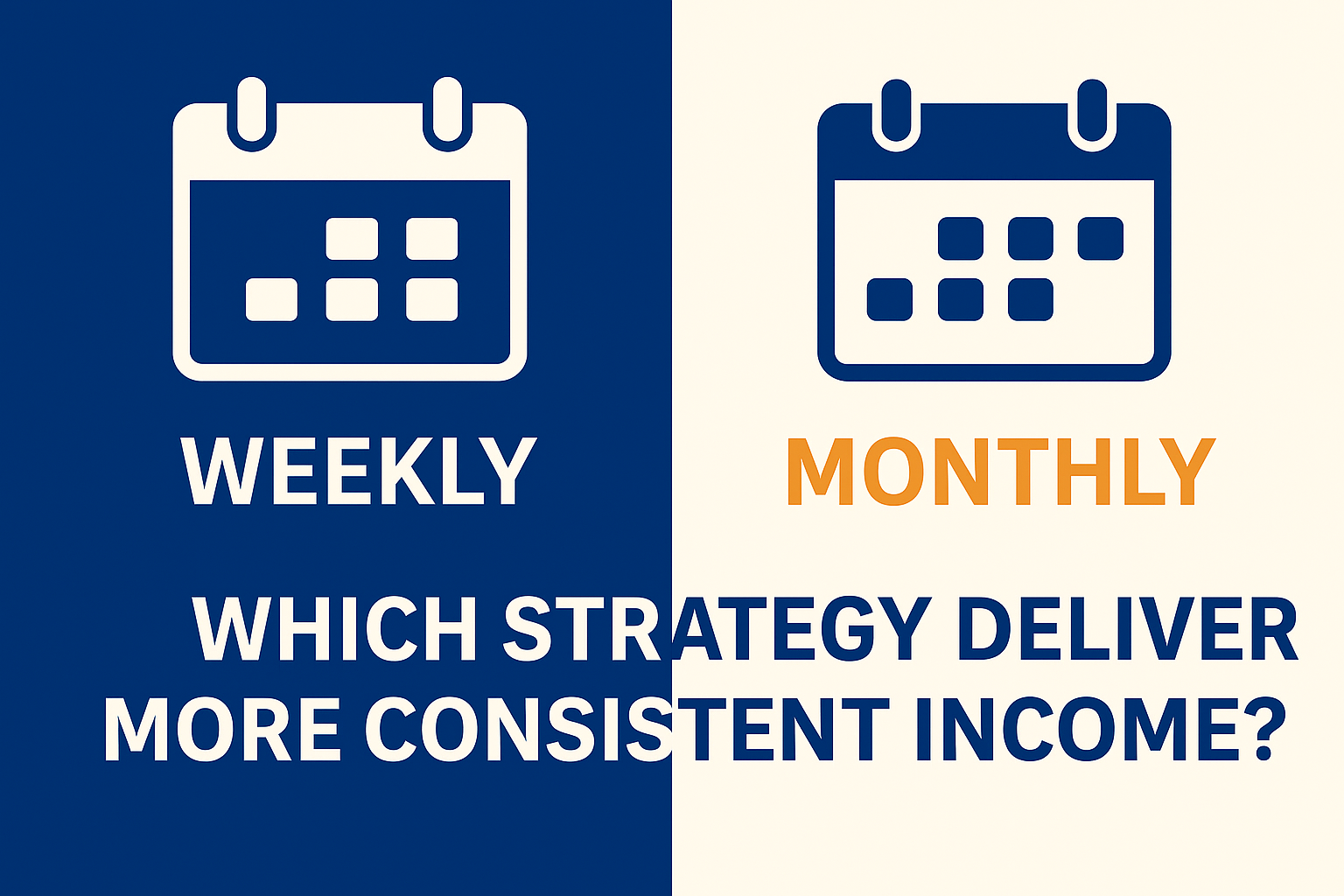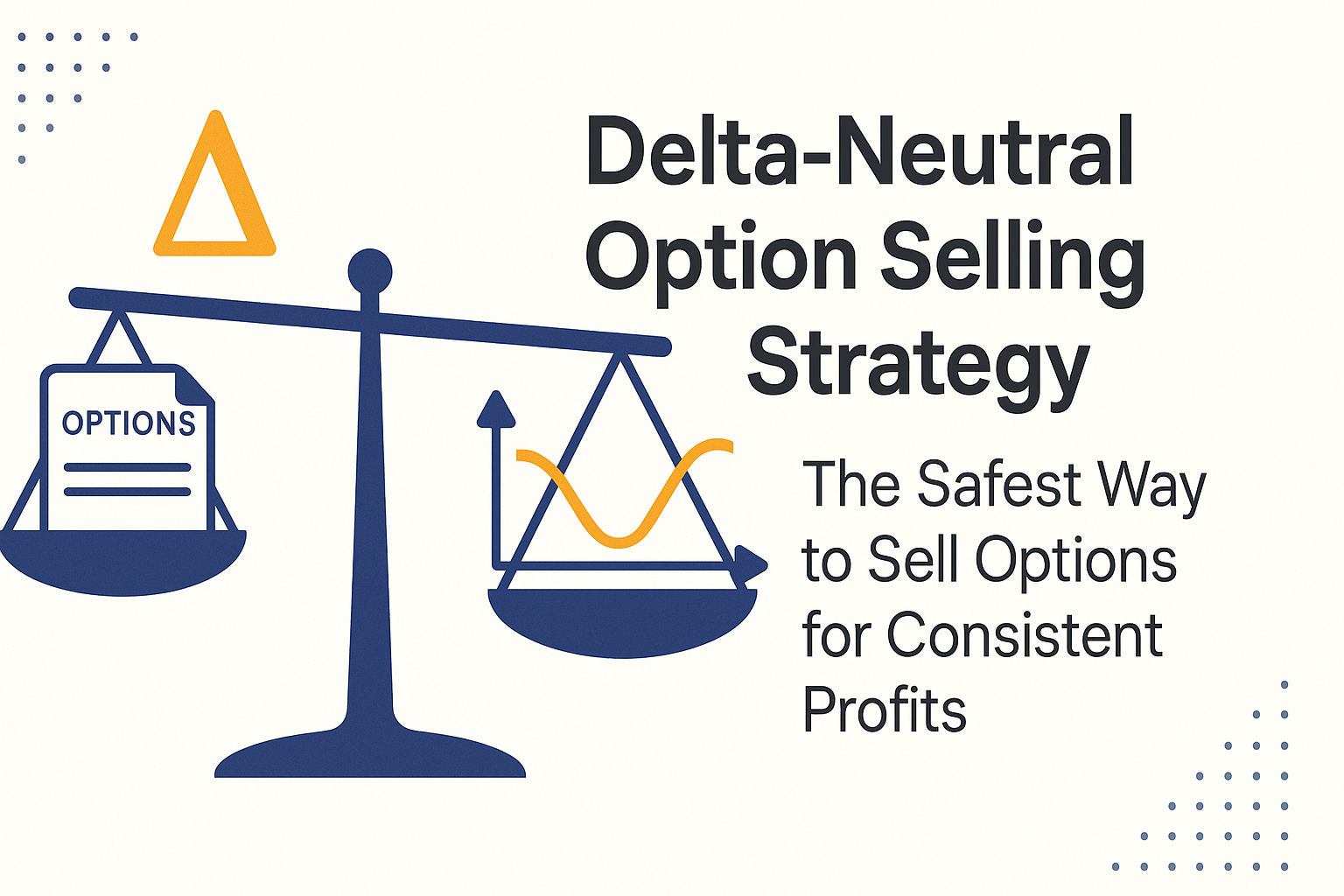Iron Condor Strategy: Build a High-Probability Income Setup That Wins Consistently
“In trading, it’s not about being right or wrong—it’s about how much you make when you’re right and how much you lose when you’re wrong.” – George Soros
Introduction
Options trading offers several powerful strategies for generating consistent income with managed risk. One of the most popular neutral strategies among experienced traders is the Iron Condor Strategy. If you’ve ever wondered how to profit from a sideways market with limited risk, this setup might be your best ally.
In this guide, we’ll explore what an Iron Condor is, how it works, and how to build one for high-probability income trades. We’ll also look at real-world tips, risk management techniques, and when to avoid this setup.
What is an Iron Condor Strategy?
An Iron Condor is a combination of two vertical spreads: a Bear Call Spread and a Bull Put Spread, placed on the same underlying asset and with the same expiration date.
- The Bull Put Spread profits when the underlying stays above a certain level.
- The Bear Call Spread profits when the underlying stays below a certain level.
Together, they create a “profit zone” between the two spreads. If the underlying stays within this range, the trader keeps the premium received.
Iron Condor Structure
Here’s a breakdown of how an Iron Condor strategy is typically structured:
- Sell 1 OTM Call
- Buy 1 further OTM Call
- Sell 1 OTM Put
- Buy 1 further OTM Put
This results in a net credit because you’re selling two options closer to the money and buying two options further away.
📌 Example:
Let’s say NIFTY is trading at 20,000. You could set up:
- Sell 20,300 Call
- Buy 20,400 Call
- Sell 19,700 Put
- Buy 19,600 Put
You’ll receive a net credit upfront, and your maximum profit is this credit if NIFTY stays between 19,700 and 20,300.
Why Choose Iron Condor Strategy?
The Iron Condor strategy has multiple benefits for income-seeking traders:
✅ Defined Risk and Reward
Your maximum loss and profit are predetermined. This makes it a safe option-selling strategy if applied correctly.
✅ High Probability Setup
You win if the stock/index stays within a defined range. With proper selection, the probability of profit can be 65–80%.
✅ Works in Sideways Markets
Iron Condors are ideal for markets that lack strong directional bias. If the asset is range-bound, this strategy can deliver steady income.
Key Metrics to Monitor
Before placing an Iron Condor, evaluate these important metrics:
🔹 Delta and Probability of Profit (POP)
Aim for a setup where the short strikes are at delta 15–20. This increases the chances of expiring worthless.
🔹 Implied Volatility (IV)
Higher IV means higher premiums, which means better reward. But be cautious—high IV also means potential movement.
🔹 Risk-Reward Ratio
Your potential reward is limited, but so is your risk. Always aim for a favorable risk-reward that fits your trading psychology.
When to Deploy an Iron Condor
Timing plays a crucial role. You should consider the Iron Condor strategy when:
- Market is range-bound with no major events on the horizon
- IV is moderately high, increasing premium collection
- Expiry is near (usually 10–20 days out), allowing theta decay to accelerate
Avoid deploying Iron Condors during earnings, monetary policy days, or any news-heavy period.
Adjustments and Risk Management
No strategy is perfect. You must monitor your position and adjust as needed:
🔁 Rolling the Spread
If the price moves too close to your short strike, consider rolling it further OTM to widen your safety net.
🛡️ Hedging with Futures
Advanced traders may hedge with small future positions if the market shows sudden directional bias.
✂️ Cutting Losers Early
If one side gets tested and breach seems imminent, close that side to avoid max loss and let the other side decay.
Iron Condor Payoff Graph
The Iron Condor payoff looks like a plateau—a flat range of max profit with limited downside on both ends. This visual helps clarify why the setup is perfect for neutral to low-volatility markets.
Common Mistakes to Avoid
- Overtight Strikes: Too narrow a range reduces your chances of success.
- Ignoring IV Crush: Deploying during low IV leads to lower premiums and poor reward-to-risk ratio.
- Lack of Exit Plan: Always have a profit/loss exit target (e.g., 50% of premium or 1x risk).
Iron Condor vs Other Strategies
| Strategy | Market Outlook | Max Profit | Risk Level |
|---|---|---|---|
| Iron Condor | Neutral | Limited (credit) | Limited |
| Short Straddle | Neutral | Unlimited | Unlimited |
| Covered Call | Mildly Bullish | Limited | High |
| Vertical Spreads | Directional (up/down) | Limited | Limited |
This comparison helps you decide when Iron Condor is the most optimal.
Real-World Use Cases
Retail traders, especially in markets like NIFTY or BANKNIFTY, deploy weekly or monthly Iron Condors to generate regular income. With the right adjustments and management, this strategy can add stable returns to your portfolio.
Conclusion
The Iron Condor strategy is a reliable tool for traders who want steady income with controlled risk. While the strategy requires discipline and proper market selection, its high probability nature makes it a favorite among seasoned option sellers.
If you’re tired of betting on market direction and prefer a strategy with statistical edge, the Iron Condor deserves a place in your trading playbook.
“Let your mind trade – not your emotions“
✅ Next Steps
- Try deploying a paper-trade Iron Condor for next week’s expiry.
- Track your POP and Greeks using tools like Sensibull or Opstra.
- Read our guide on Weekly vs Monthly Option Selling Strategies







With every thing that appears to be developing throughout this particular subject material, all your points of view tend to be quite exciting. Nevertheless, I appologize, but I do not subscribe to your whole plan, all be it stimulating none the less. It would seem to me that your commentary are generally not totally rationalized and in reality you are your self not entirely convinced of your assertion. In any event I did appreciate reading it.
Wonderful post however , I was wondering if you could write a litte more on this subject? I’d be very thankful if you could elaborate a little bit more. Many thanks!
I loved as much as you will receive carried out right here. The sketch is tasteful, your authored subject matter stylish. nonetheless, you command get got an nervousness over that you wish be delivering the following. unwell unquestionably come further formerly again as exactly the same nearly very often inside case you shield this increase.
I¦ve been exploring for a little bit for any high-quality articles or weblog posts on this kind of house . Exploring in Yahoo I finally stumbled upon this web site. Reading this information So i am glad to exhibit that I have an incredibly good uncanny feeling I found out just what I needed. I so much definitely will make sure to don¦t omit this website and give it a glance on a continuing basis.